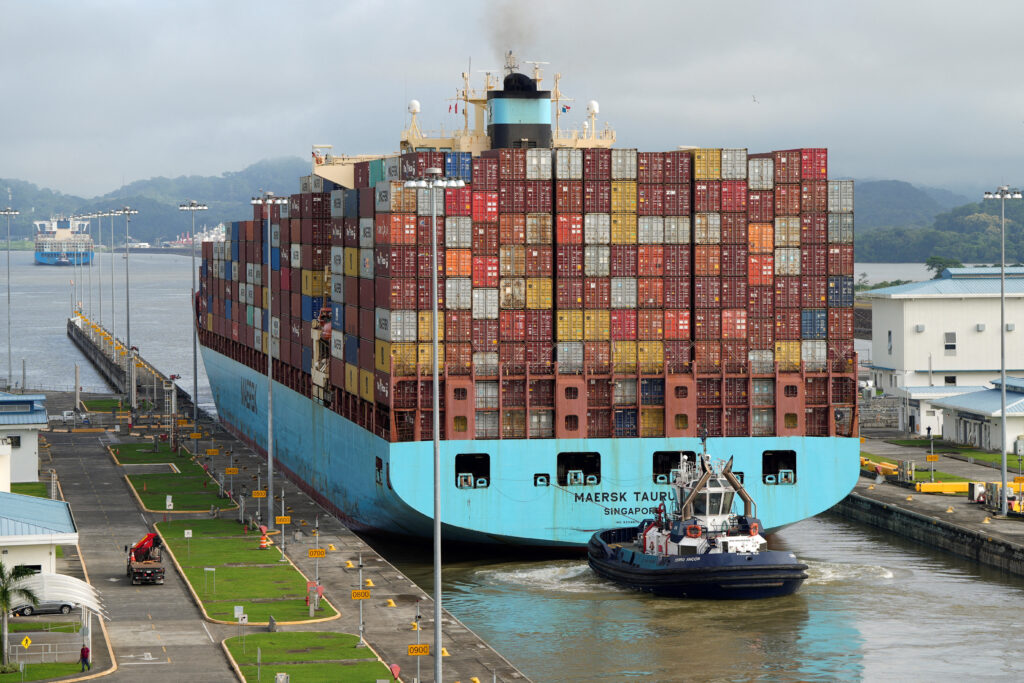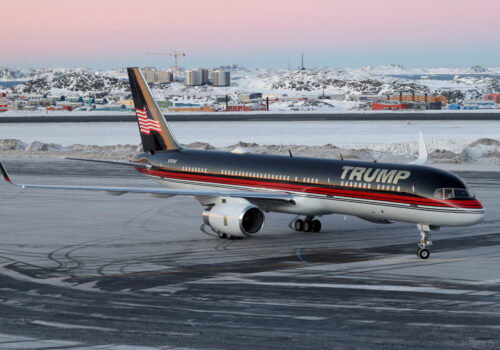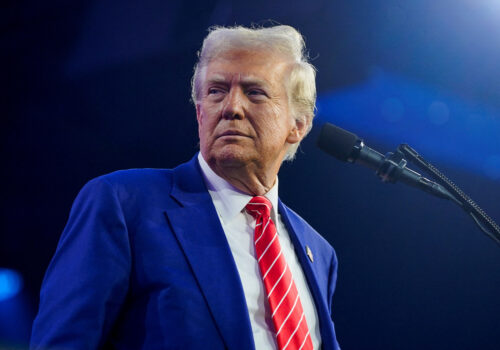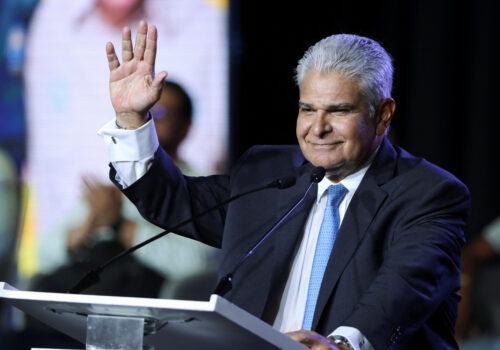President-elect Donald Trump’s recent rhetoric on territorial ambitions in the Western Hemisphere—ranging from retaking the Panama Canal and buying Greenland to annexing Canada—has generated significant attention and speculation about the incoming administration’s plans. Among these imperialist ambitions, the reclamation of the Panama Canal stands out as a focal point of immediate and relevant strategic significance. On Tuesday, Trump deliberately refused to rule out the use of military force, preserving maximum leverage in what has so far been a one-sided negotiation.
Why is Trump focused on these issues now? The incoming president’s remarks likely represent a calculated two-level game strategy: Internationally, Trump is looking to tackle rising canal transit fees while countering China’s expanding influence in the Western Hemisphere. Domestically, this rhetoric appeals to his political base. While the abrupt and public expressions of displeasure regarding Panama and the canal risk undermining hemispheric stability, legitimate concerns about growing Chinese influence over the canal demand Washington’s attention and warrant a measured, diplomatic approach.
Intervention to sovereignty
The Panama Canal’s origins and US intervention are inextricably intertwined. After failed negotiations with Colombia, the United States pivoted to support Panamanian independence in 1903, with President Theodore Roosevelt employing “gun boat diplomacy” to deter Colombian resistance to the movement. The reward for military support and US recognition of the Republic of Panama was the Hay-Bunau-Varilla Treaty, which granted the United States perpetual control over a ten-mile-wide canal zone for ten million dollars down and $250,000 a year. After considerable investment of US blood and treasure, the US-built canal remains a remarkable engineering achievement and a critical artery of global trade. However, the 1903 political arrangement sowed deep-seated resentment over perceived infringements on Panamanian sovereignty.
In 1977, President Jimmy Carter championed the Torrijos-Carter Treaties, aiming to foster goodwill and strengthen US-Panama relations. To secure Senate ratification, two treaties were negotiated: one for transfer of the canal by the turn of the millennium and the other to ensure permanent neutrality. The Senate ratified the treaties by the slimmest of margins. On December 31, 1999, Panama assumed control of the canal.
The Panama Canal is vital for global shipping, offering unmatched efficiency for trade between Asia and the Americas’ eastern ports. Alternatives such as overland transport or navigating Cape Horn add significant distance, cost, and environmental impact, while Arctic routes are seasonal and geopolitically constrained. As the most reliable maritime link between the Atlantic and Pacific, the canal remains irreplaceable.
China’s expanding influence
Trump’s recent comments on the Panama Canal’s transit fees and Chinese influence have thrust the canal to the forefront of US strategic discourse. Chinese companies such as Landbridge Group and the Hong Kong-based CK Hutchison Holdings now operate ports at both ends of the canal. This presence raises concerns about potential dual-use infrastructure and strategic maneuvering, particularly given China’s deepening ties to Latin America.
The United States wields significant economic leverage over Panama. As the primary user of the canal and Panama’s largest provider of foreign direct investment—$3.8 billion annually—the United States can influence Panamanian decision making. Conversely, the United States and its partners present few viable alternatives to Chinese investment in the region, a reality unlikely to change in the short term. Will Panama prioritize alignment with US interests to safeguard this support, or will it risk economic repercussions by favoring China and leveraging its control over this vital trade route? Alternatively, could US economic retaliation, Panama’s reaction, and Chinese competition escalate tensions to the point that interventions are warranted under the treaty?
Transit fees, which are calculated using a universally applicable formula, have surged in recent years. In part, these fee increases are a response to droughts in 2023 and early 2024, which restricted the number of ships that could transit the canal. Authorities raised fees to counteract revenue loss from the transit restrictions. Nonetheless, if costs continue to rise, and if China continues to expand its presence around the canal, then there may be louder calls to resurrect the Roosevelt Corollary to the Monroe Doctrine. This corollary asserts the United States’ right to intervene in the region to ensure stability and prevent foreign interference.
The legal framework
Trump’s claim that the Panama Canal Treaties were a “bad part” of the Carter legacy is a simplification of the nuanced legal and geopolitical complexities surrounding the Panama Canal. The Permanent Neutrality Treaty imposed obligations on both parties. An argument can certainly be made that Panama has, or is close to, breaching some of its treaty obligations:
- Transit fees: Panama committed to ensuring that tolls and related charges for transit would remain “just, reasonable, equitable, and consistent with international law.” US Senate consent to the treaty was predicated on an understanding that fee-setting would consider US interests, including factors such as the feasibility of alternative transportation modes and the goal of maximizing US international commerce. While the shipping fees may be flag-agnostic, they have a disproportionate impact on US shipping. Interpretations of reasonableness may vary but it is clear that Trump views current fees paid by US companies as “exorbitant.”
- Neutrality: Both parties agreed to maintain the canal’s permanent neutrality with particular emphasis on ensuring access for military vessels. China’s economic control on both sides of the canal raises concerns about the potential for rapid militarization and its ability to control canal access. Panama’s willingness to relinquish critical economic control of strategically significant areas and infrastructure—a hallmark of China’s Belt and Road Initiative strategy—casts doubt on Panama’s resolve and capacity to effectively safeguard the canal’s neutrality as agreed to in the treaty. The costs of a neutrality breach are significant enough that the United States may be justified in taking preemptive action.
The rhetoric, while appealing to nationalist sentiments, risks undermining decades of diplomacy, established international law, and US-Panama relations. However, Washington cannot afford to overlook China’s growing influence, particularly given the canal’s strategic importance in the US-China competition—China ranks as its second-largest customer. Trump’s statements likely aim to pressure Panama on transit tariffs, caution Panama on increased reliance and cooperation with China, and project US resolve. To protect its interests without destabilizing the region, the United States must approach this situation with strategic foresight and diplomatic precision.
Gregg Curley is the 2024-2025 US Marine Corps fellow at the Atlantic Council’s Scowcroft Center for Strategy and Security.
The views in this article are personal and do not reflect the position of the US Department of Defense, the US Department of the Navy, or the US Marine Corps.
Further reading
Wed, Jan 8, 2025
Everything you need to know about Trump’s Greenland gambit
New Atlanticist By
The incoming US president is adamant in his desire to acquire Greenland for the United States, which has angered Denmark and other US allies.
Thu, Jan 9, 2025
Land grabs, occupation, and threats will not make the US great again
New Atlanticist By Daniel Fried
The president elect’s threats may be bluster or tactical, but they reveal a dark side of power unworthy of any US president.
Tue, May 7, 2024
Panama has a new president. José Raúl Mulino should focus on these three priorities.
New Atlanticist By Felipe Félix Méndez
By implementing these changes, the Mulino administration will be able to place Panama on a path of inclusive and sustainable development.
Image: Singapore MAERSK TAURUS container ship transits the expanded canal through Cocoli Locks at the Panama Canal, on the outskirts of Panama City, Panama August 12, 2024. REUTERS/Enea Lebrun/File Photo



